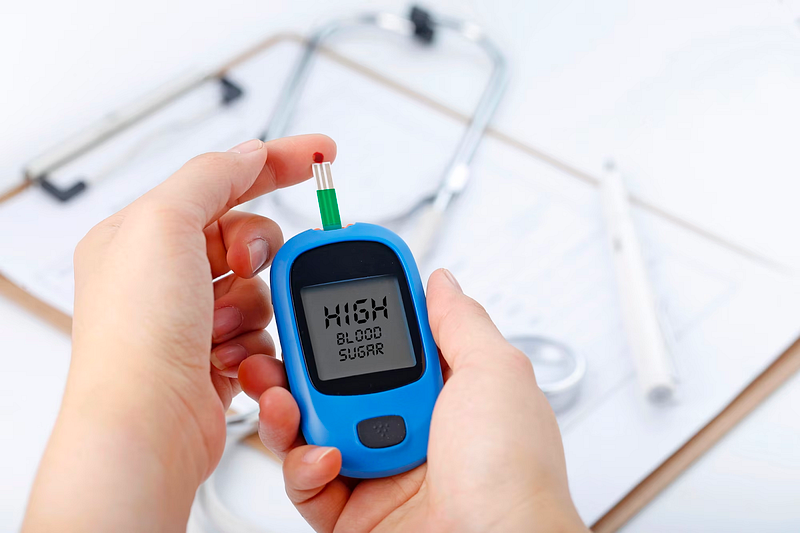Maintaining optimal health involves being aware of the subtle signals your body sends.
One critical aspect that’s often overlooked is blood sugar.
Unbeknownst to many, your body may be sending distress signals indicating elevated blood sugar levels.
Recognizing these early warning signs can be a game-changer in preventing serious health issues like diabetes.
How do you feel when your blood sugar is too high? What are signs of high blood sugar?
Let’s delve into the seven shocking indicators that your body might be grappling with high blood sugar.

1. Frequent Urination: The Telltale Sign of Excess Glucose
Have you found yourself making more trips to the bathroom lately?
It might not just be a random occurrence. Frequent urination is a red flag that your body is attempting to rid itself of excess glucose in the blood.
As the body pushes out this surplus sugar through urine, it also flushes out essential fluids, leading to dehydration.
The consequences extend beyond simple discomfort; chronic dehydration can result in various health problems.
So, if you’re making more bathroom visits than usual, it might be time to investigate your blood sugar levels.
Let’s take a look at more early and subtle warning signs of diabetes. These can be indicators your blood sugar is out of control.

2. Unquenchable Thirst: A Sign of Dehydration and High Blood Sugar
Dehydration, triggered by frequent urination, often manifests as an insatiable thirst.
If you find yourself constantly reaching for a glass of water and still feeling parched, it could be your body’s way of signaling elevated blood sugar.
The vicious cycle of excess sugar, frequent urination, and intense thirst underscores the need to address the root cause to break free from this health-damaging loop.

3. Numbness and Tingling: Small Vessels Suffering the Consequences
High blood sugar wreaks havoc on the body’s small blood vessels, a fact highlighted by the onset of numbness and tingling sensations.
These sensations, often felt in the hands and feet, signify potential damage caused by the abundance of sugar in the system.
So keep this in mind when you wonder what are some early signs and symptoms of diabetes.
It’s crucial to recognize these warning signs, as they are indicative of conditions leading to diabetes — a health concern that affects millions of Americans.

4. Slow Healing: A Subtle Clue That Shouldn’t Be Ignored
Ever noticed that a wound is taking longer to heal than usual?
High blood sugar can be a culprit. Damaged blood vessels, especially in areas farther from the heart like the hands and feet, can impede the body’s natural healing processes.
The smaller blood vessels being unable to deliver sufficient oxygen to the tissues due to excessive sugar hinders the healing of wounds.
If you’re experiencing delays in wound healing, it might be time to check your blood sugar and insulin levels.
5. Vision Issues: A Window into Blood Vessel Damage
Your eyes might hold the key to understanding your blood sugar levels.
Micro-vessels in the eyes can be damaged by excess sugar, leading to blurry vision, sensitivity to light, or other visual problems.
Ignoring these signs could have serious consequences for your eye health.
Regular eye check-ups and paying attention to changes in vision can contribute to the early detection of high blood sugar issues.

6. Increased Hunger: Insulin Resistance and Its Culinary Consequences
Insulin, which is responsible for transferring energy and managing sugar in the body, can become damaged due to high sugar levels.
The body’s response to this damage is increased hunger, as it perceives a lack of energy.
Paradoxically, this increased hunger can contribute to weight gain, creating a cycle that is challenging to break.
If you find yourself constantly hungry despite eating, it might be a good idea to explore your insulin sensitivity and blood sugar levels.

7. Velvety Dark Patches: A Visible Manifestation of Insulin Overproduction
On a clinical level, the skin can provide clues about insulin levels.
Velvety dark patches, often found in areas like the neck, groin, or armpits, may indicate an overproduction of insulin.
When the body is not accustomed to such high levels of insulin, it can result in changes to the skin in specific regions.
Recognizing these skin changes is crucial, as they could signify a predisposition to or onset of major health issues.
Conclusion
In conclusion, these seven warning signs are not to be taken lightly.
I emphasize prevention and early detection, and underscore the importance of understanding these signals and taking action promptly.
I offer a variety of resources, such as books, courses, and challenges, to empower individuals to make informed choices about their health.
Making lifestyle changes, including dietary adjustments and education, can make a significant impact.
In as little as three weeks, many individuals have seen positive changes, from lowered glucose levels to improved insulin control and weight loss.
The key is to recognize the signs early, empowering yourself to take charge of your health.
Remember, these warning signs are your body’s way of communicating with you.
By heeding these signals and taking proactive steps, you can potentially reverse and alleviate the damage caused by high blood sugar.
Don’t wait until it’s too late — your health is worth the investment of time and attention.













